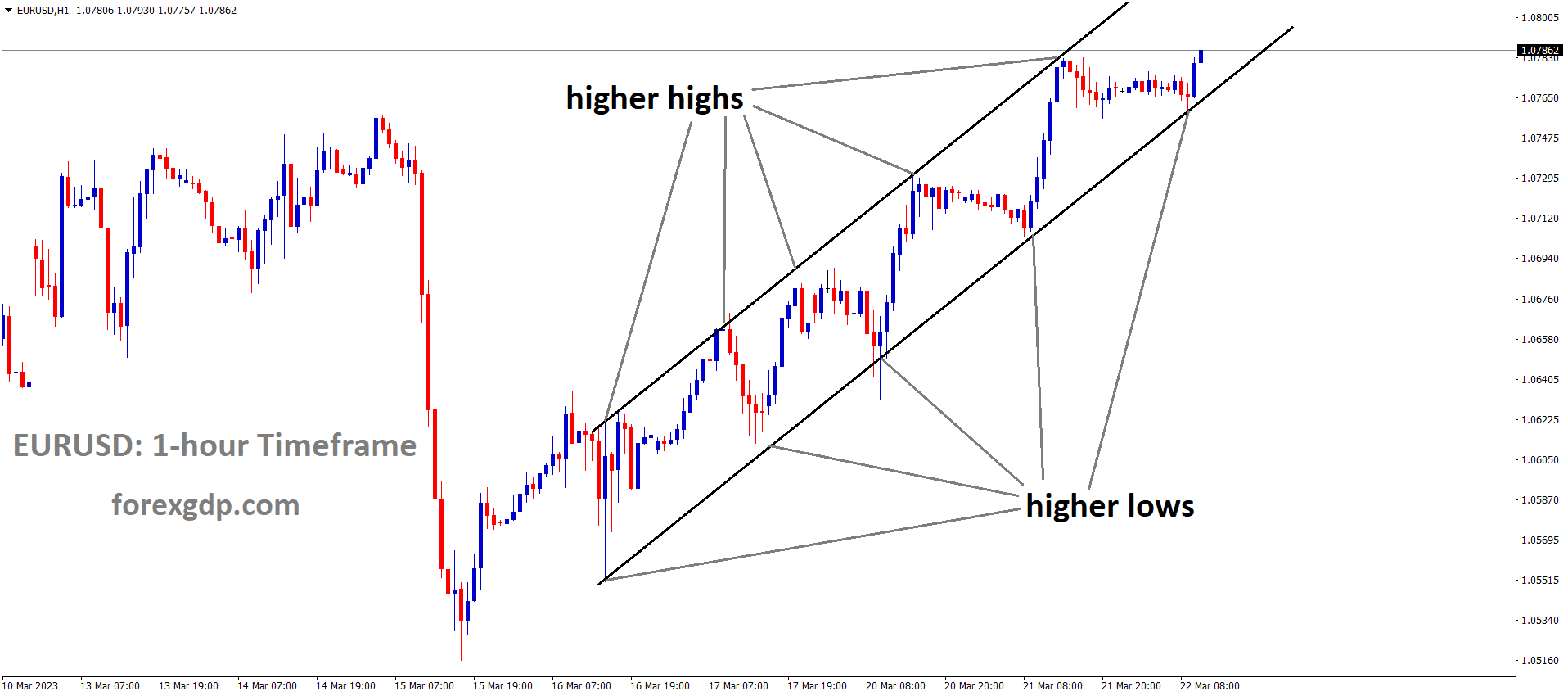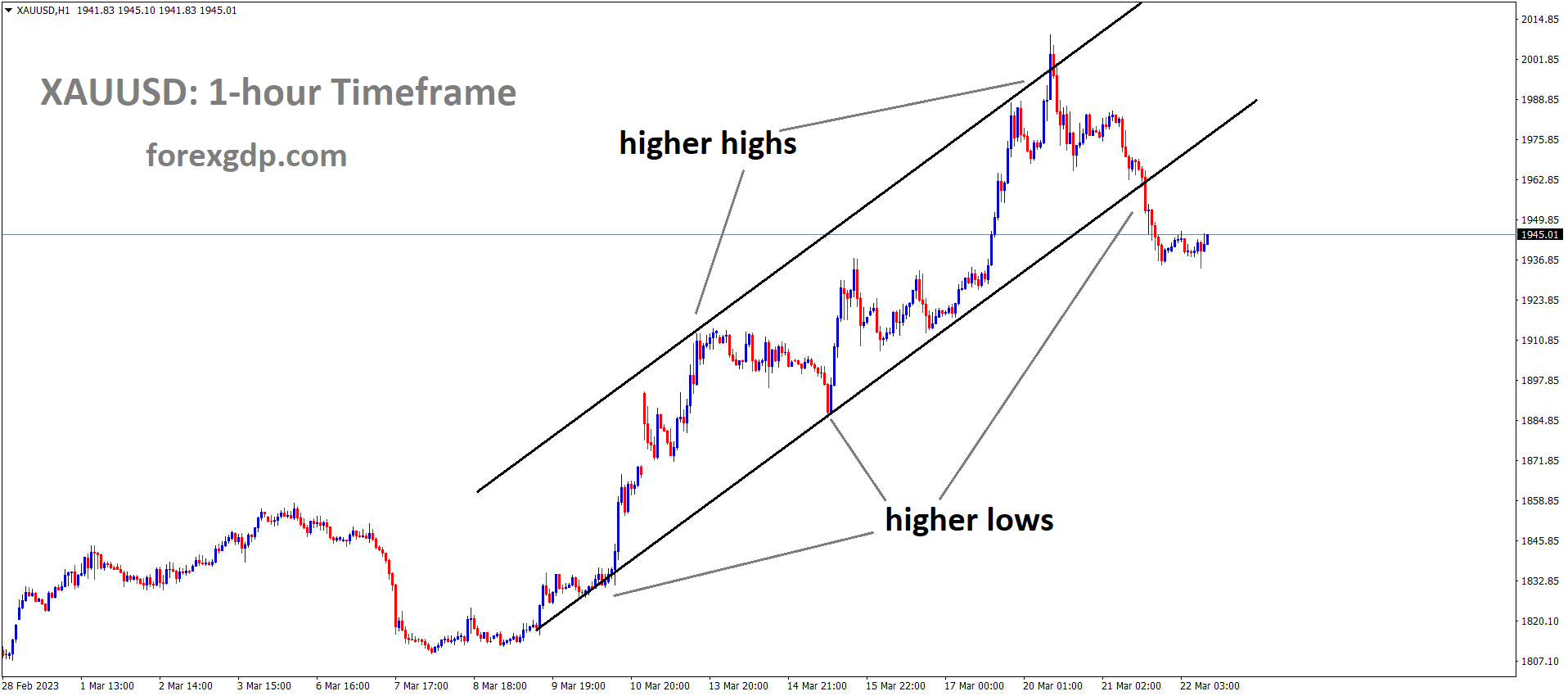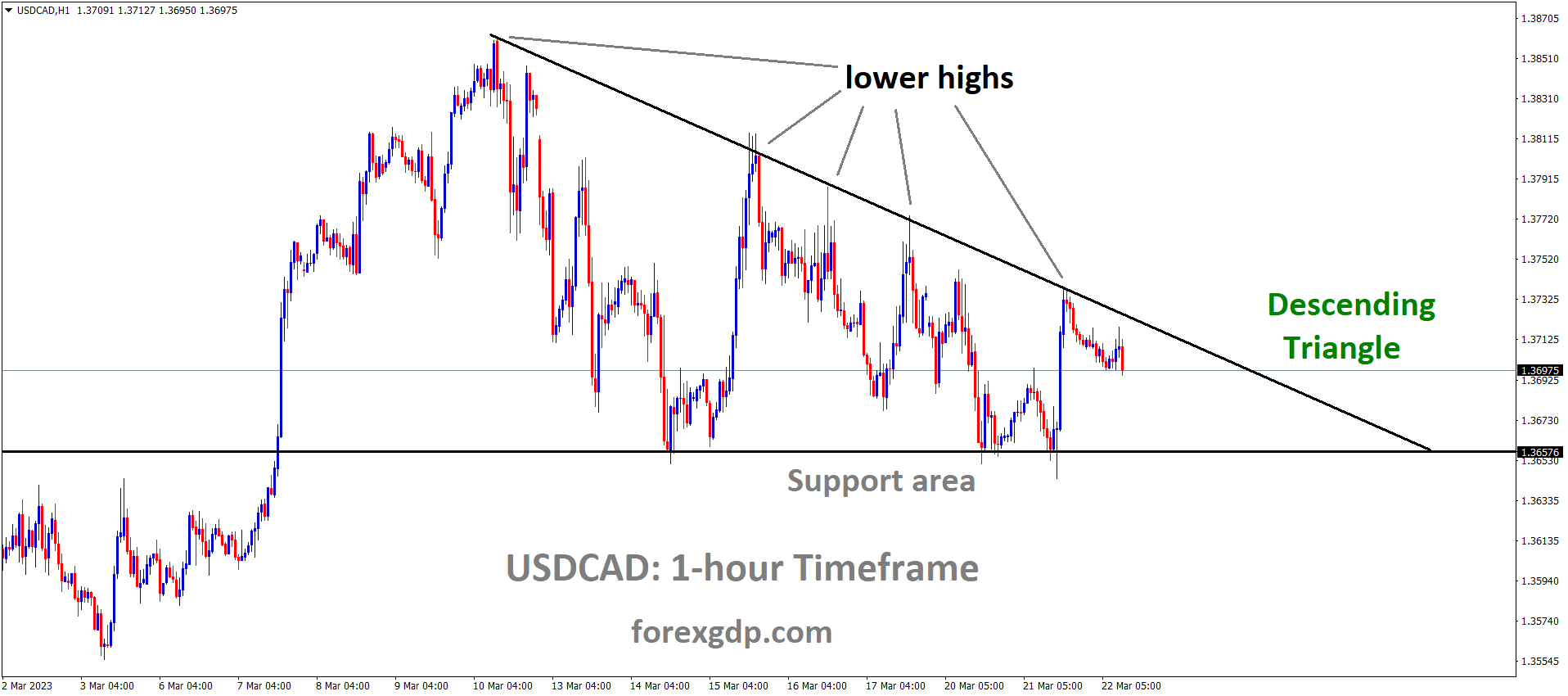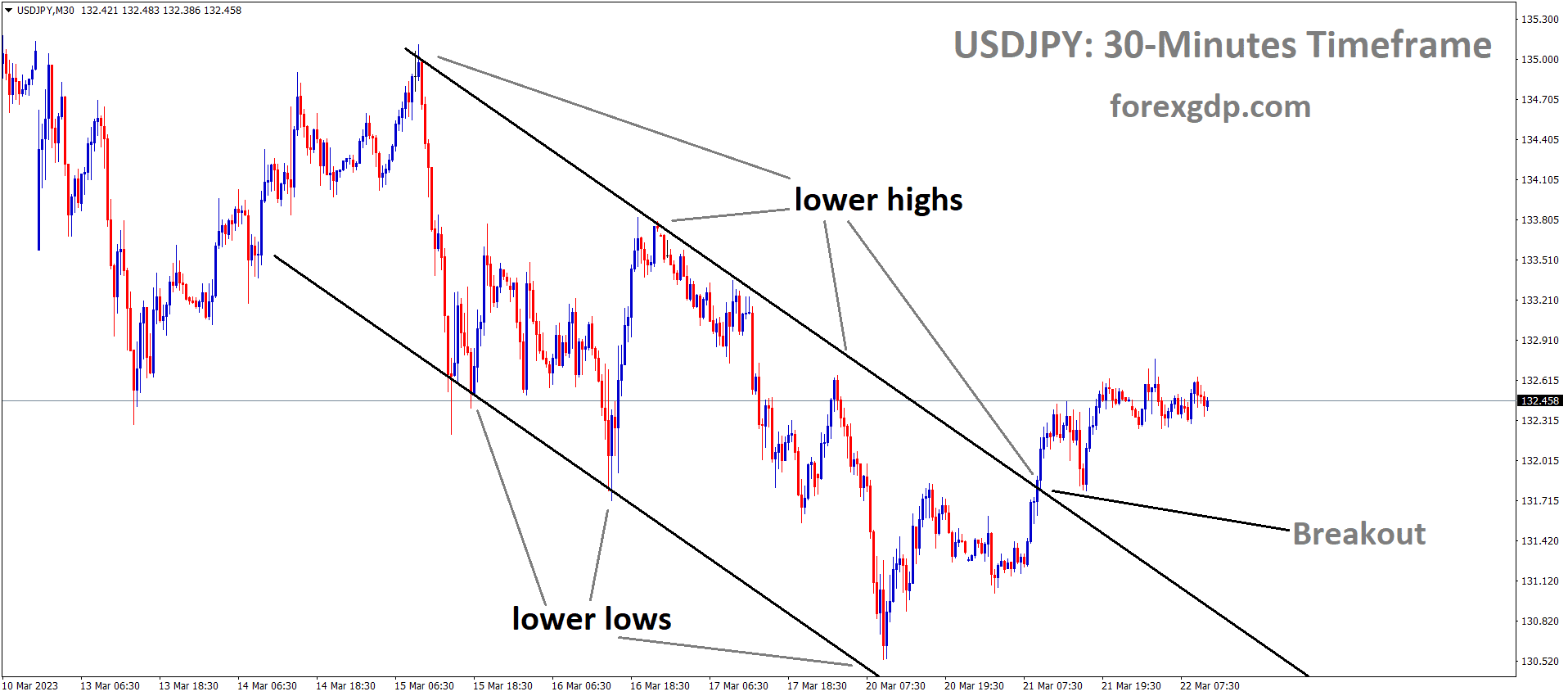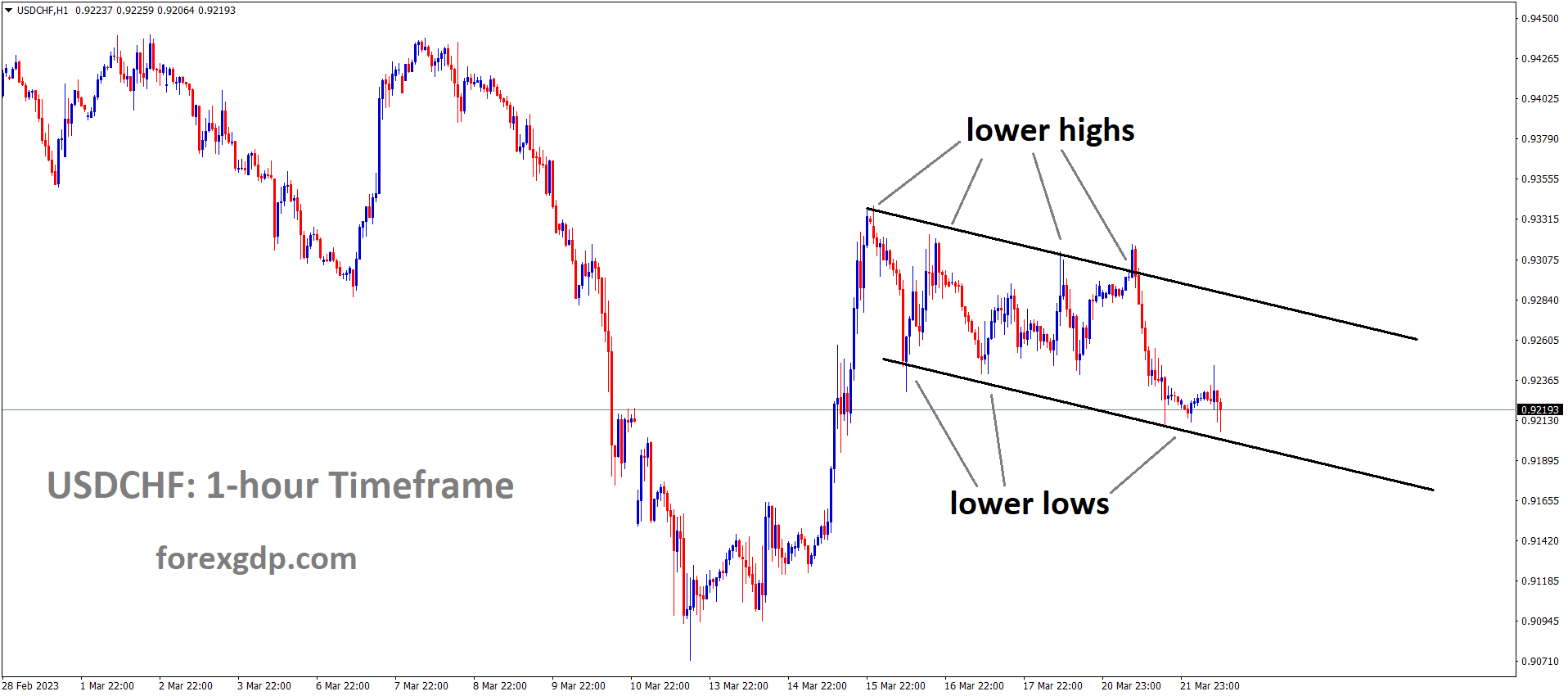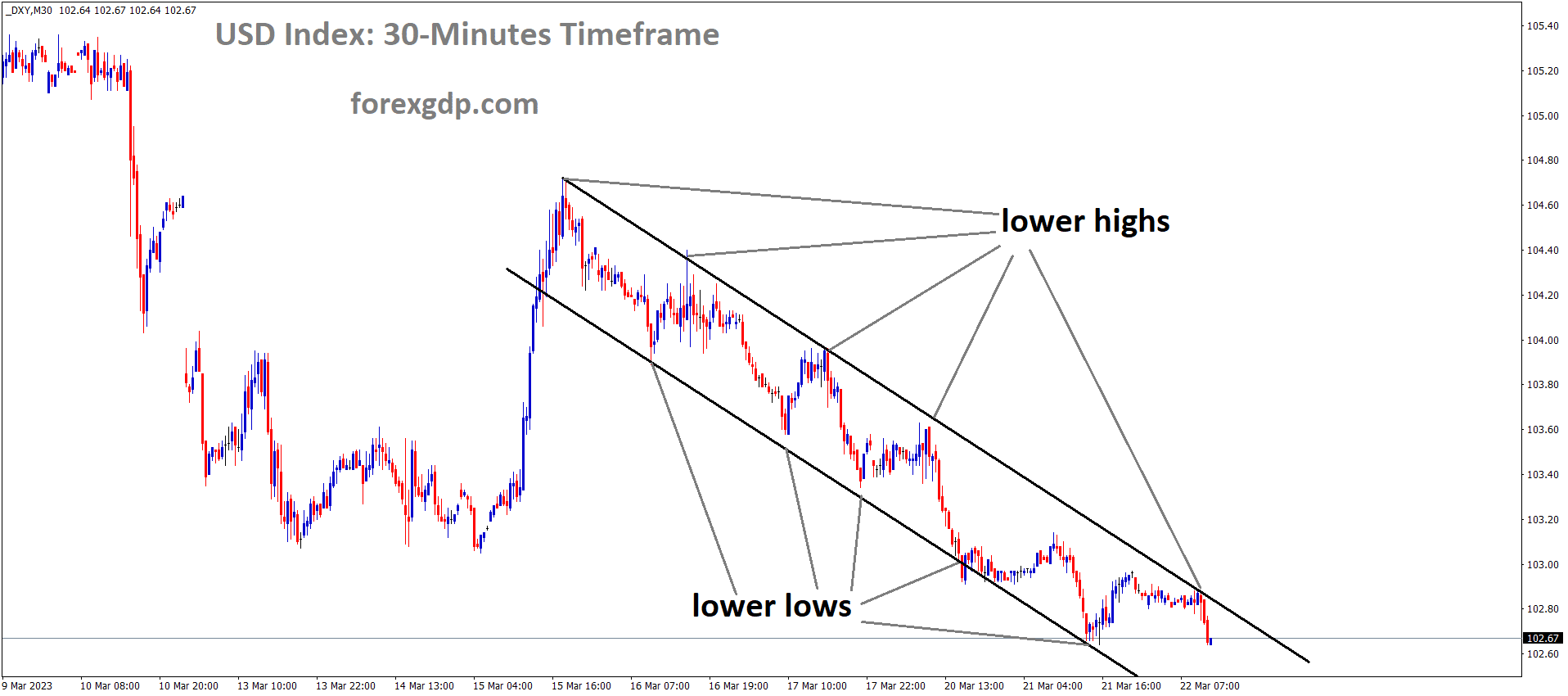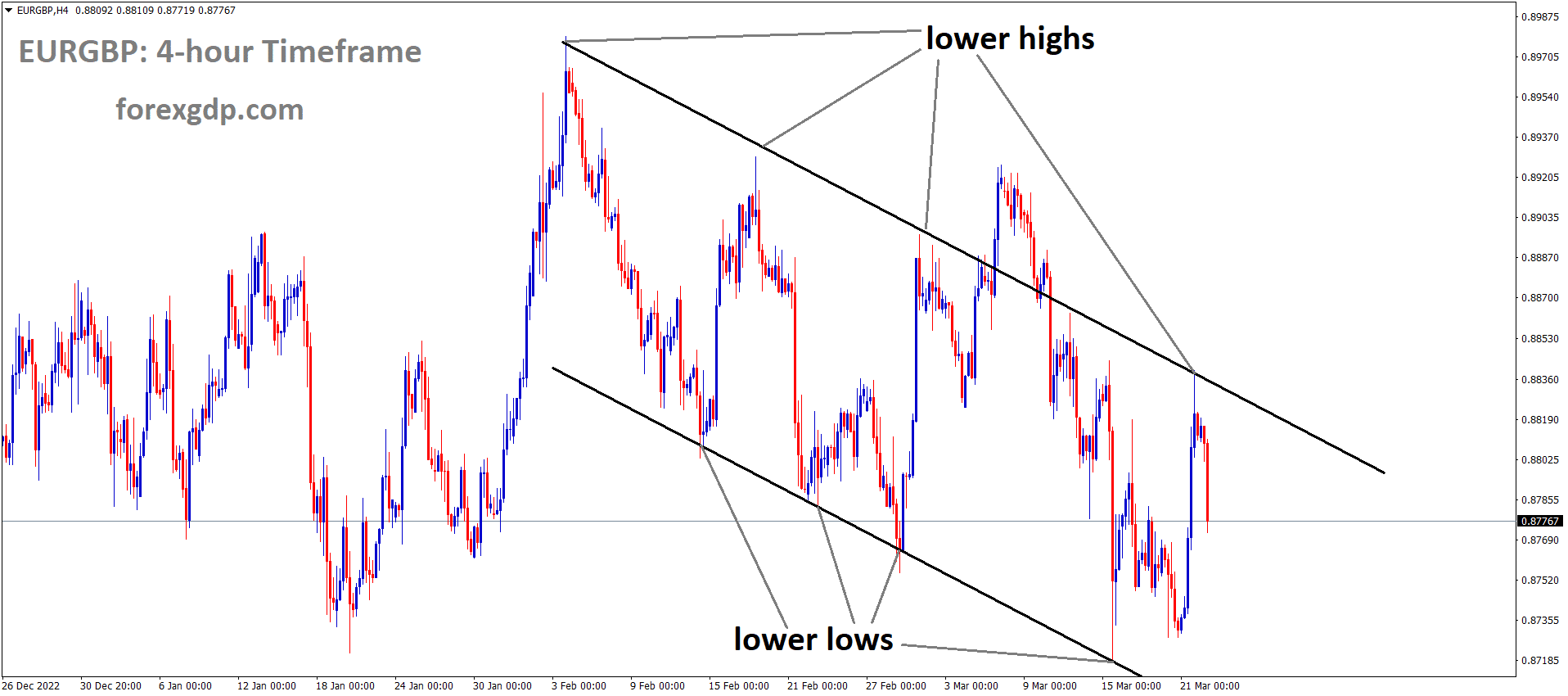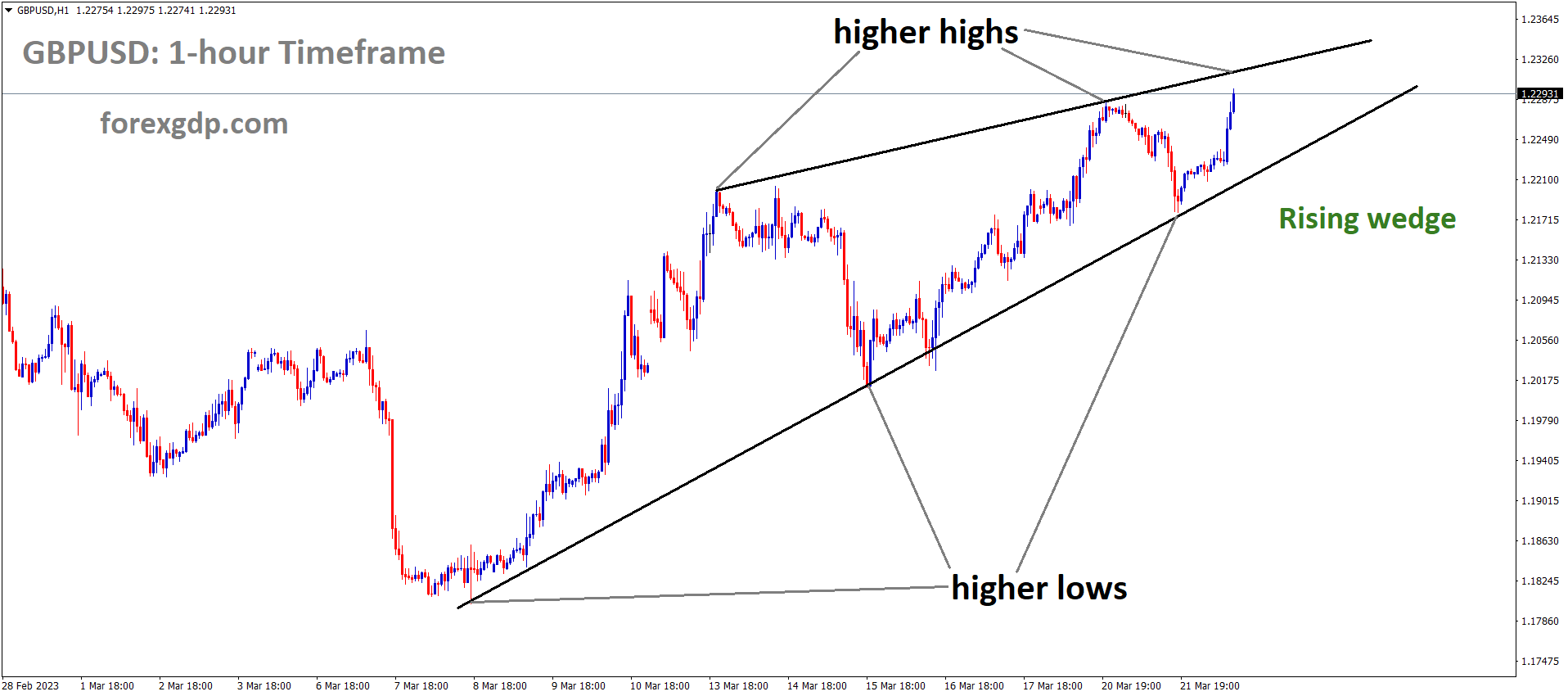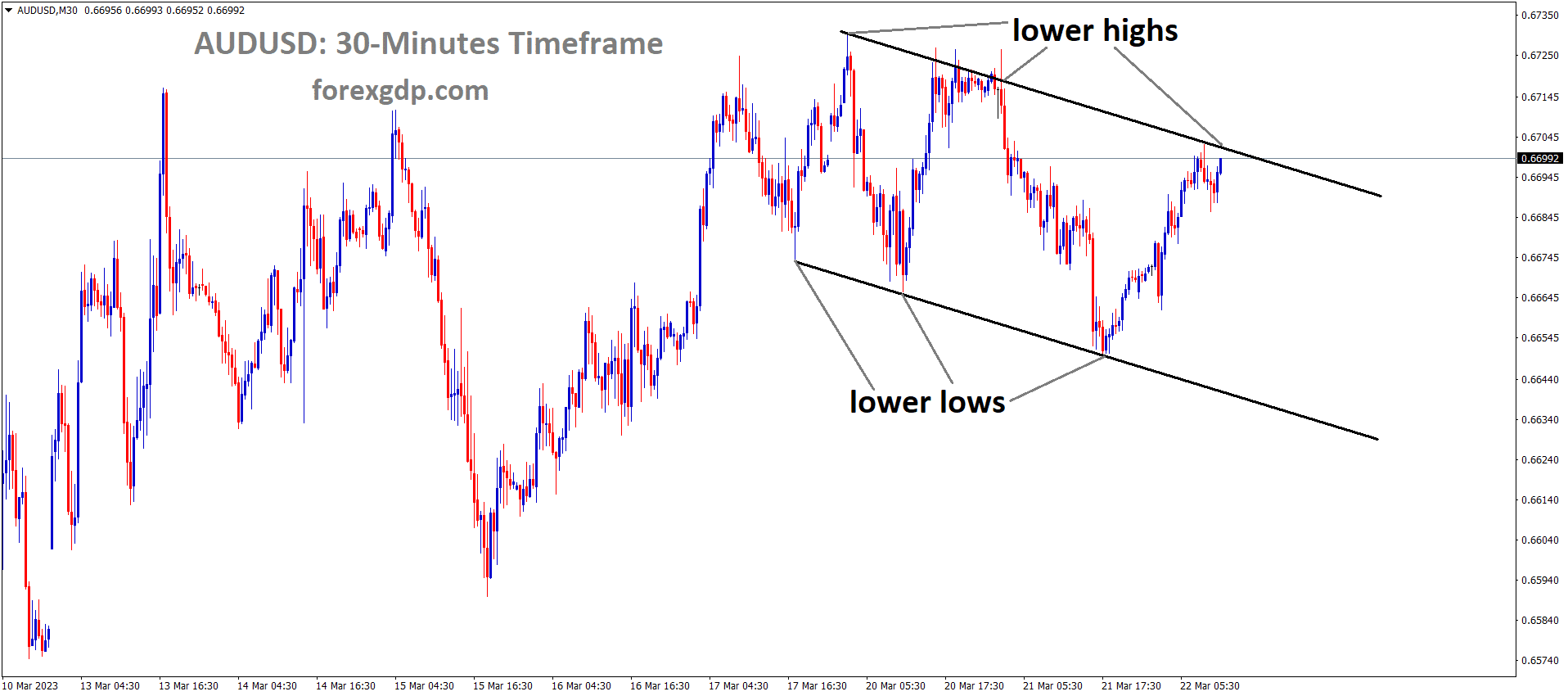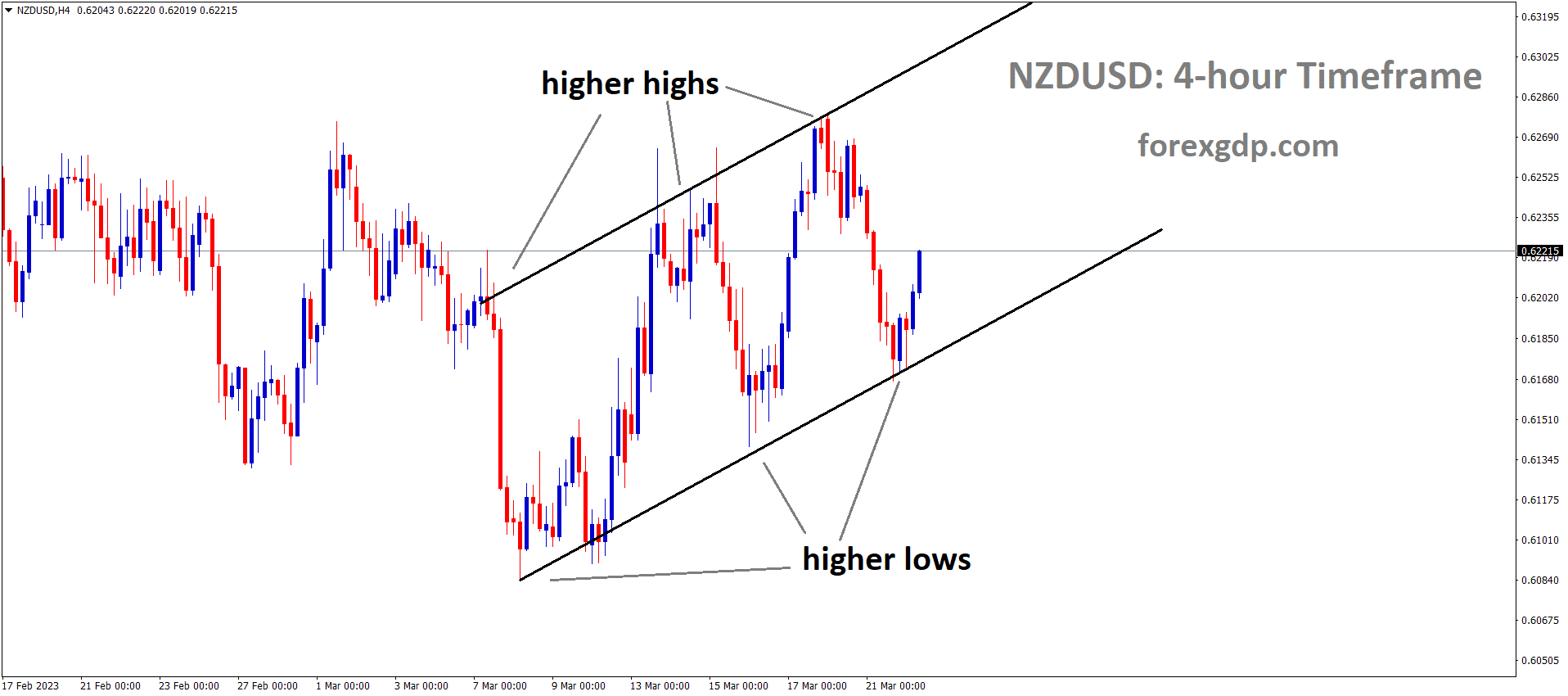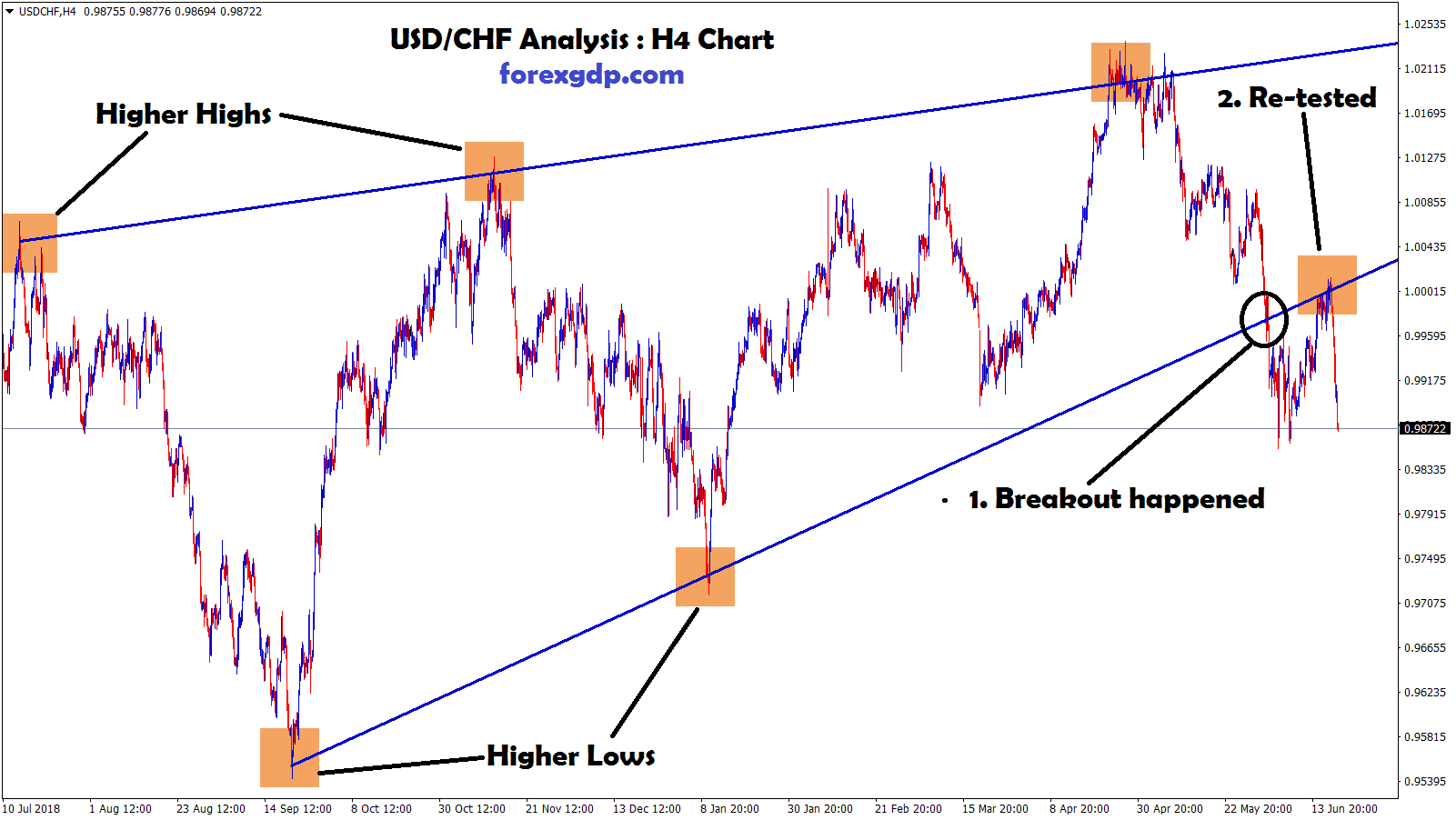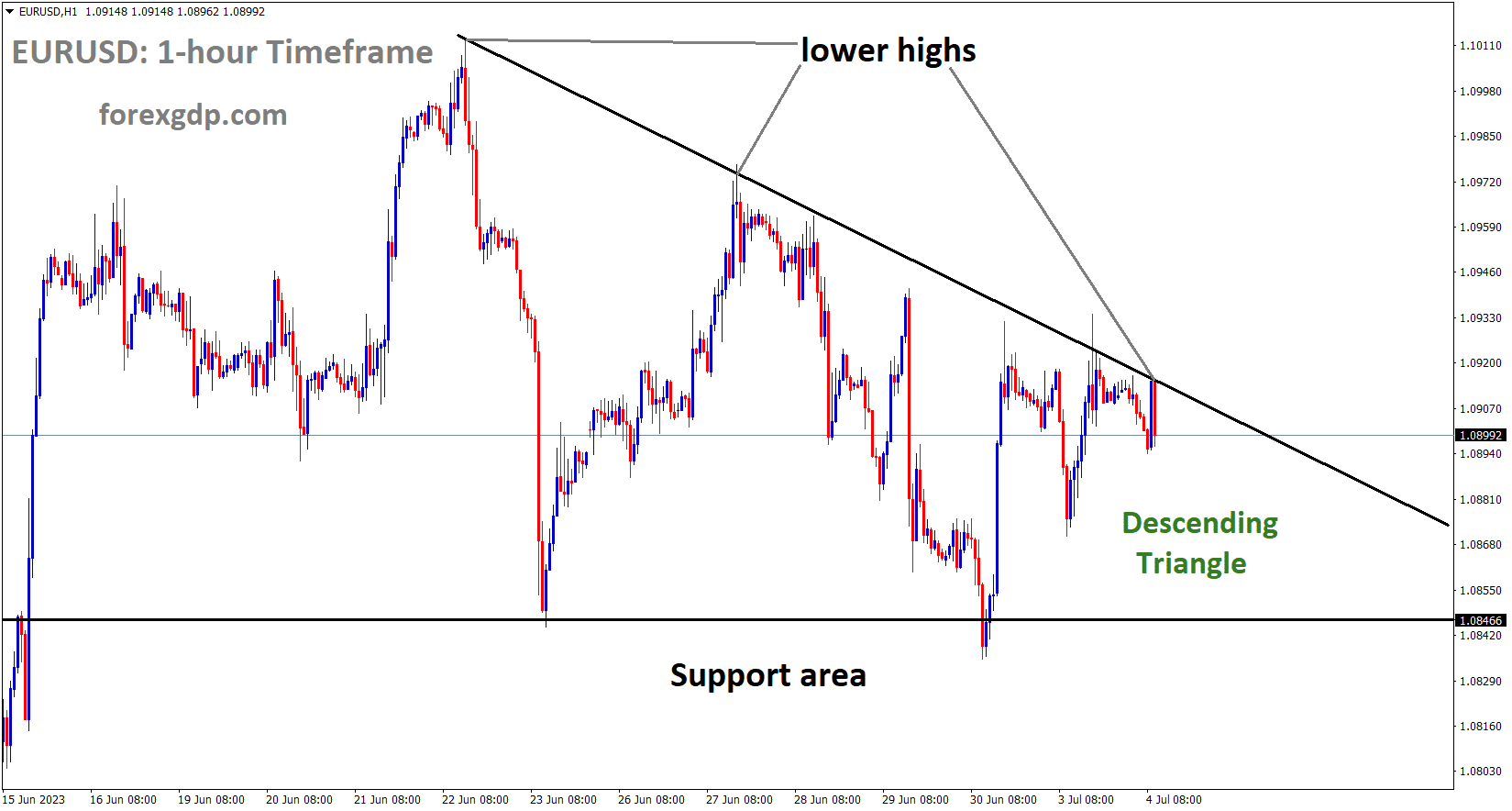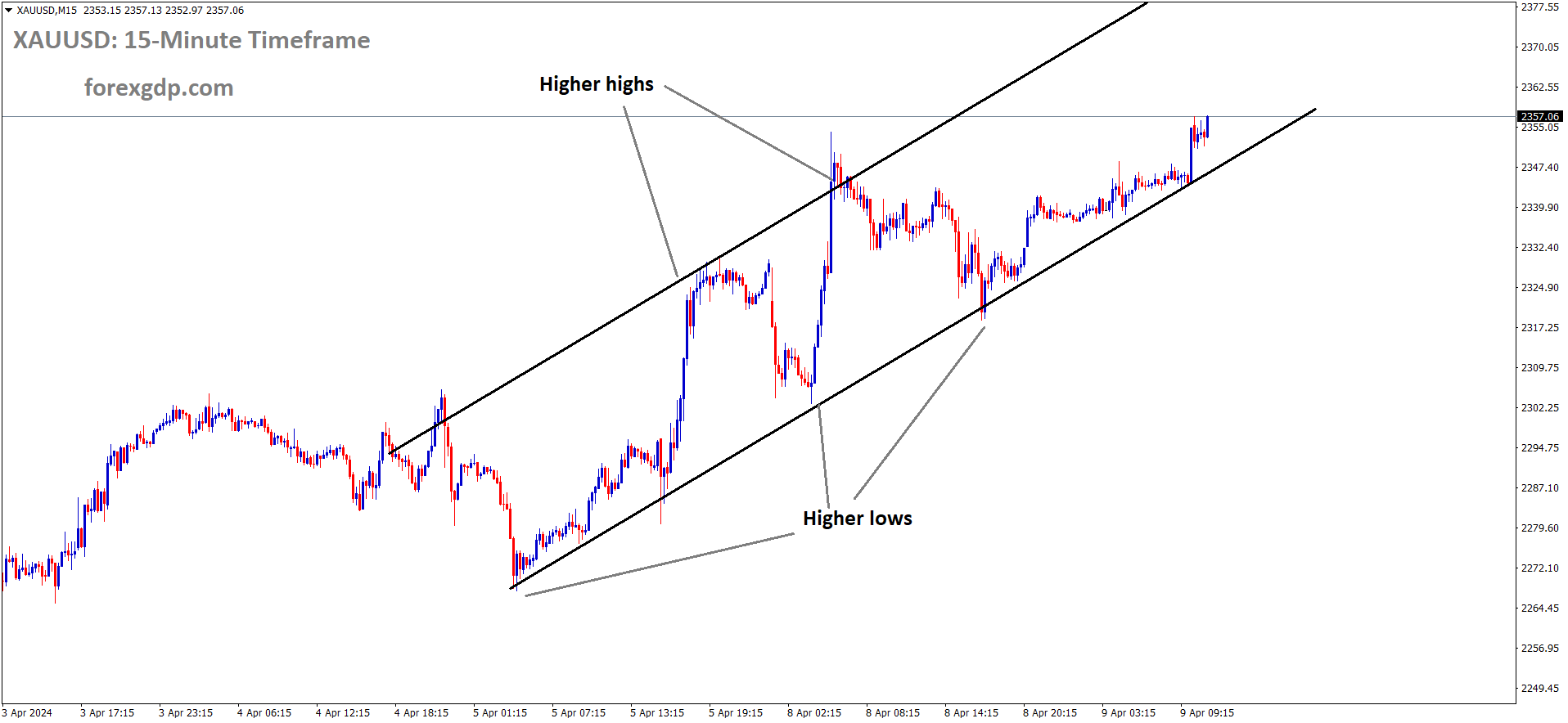EURUSD Analysis
EURUSD is moving in an Ascending channel and the market has rebounded from the higher low area of the channel.
According to Jose Manuel Campa, head of the European Banking Authority, European banks have more liquidity than is necessary. Global markets increased as a result of the central banks’ assurances. Investors now have more confidence that the ECB will increase the rate hike by 25 basis points at the upcoming meeting.
Since UBS was forced to acquire troubled Credit Suisse, European banking stocks have come under intense examination. Stock prices of several major European institutions have improved overall today, at least so far.Recent market concerns seem to have subsided. Whether it’s the awareness that AT1 bonds are treated differently outside of Switzerland or assurances from the European Central Bank (ECB) and, more recently, the S&P ratings agency that European banks can withstand turbulence, EU assets have reacted favorably.
Additionally, European banks are said to keep amounts well above the minimum liquidity standards, according to Jose Manuel Campa, chairman of the European Banking Authority. He continued by stating that despite this, apathy is not an option. A few recent losses were recovered by large EU institutions.
GOLD Analysis
XAUUSD Gold Price is moving in an Ascending channel and the market has reached the higher low area of the channel.
After the financial system began to settle down yesterday as a result of UBS Bank’s readiness to support Credit Suisse Bank and US banks’ support for Mid-sized Default Banks, the price of gold fell by 2%. Investors now have more faith in the banking system and the US dollar as a result of significant support from US and Swiss government choices.
Tuesday saw an almost 2% decline in gold prices, which is the worst daily showing since February 3. As the S&P 500 rose, the yield on the 2-year Treasury note increased by 4.7%. The anti-fiat yellow metal suffered in this environment. The benchmark US market index has increased by about 2.3% so far this week. The best week since the end of January might be in store if stocks hang onto their gains. After steps were made to allay concerns in the financial sector since Silicon Valley Bank’s collapse, calm is starting to show signs of strengthening in the financial markets.
Federal Reserve will announce its interest rate decision. Rate increases of 25 basis points from 4.75% to 5% are already factored in. At 18:30 GMT, the news conference led by Chair Jerome Powell will begin. Since SVB’s demise, markets have priced in cuts of more than 100 basis points for the remainder of this year following tomorrow’s release. The yellow metal has profited from this. After SVB’s collapse, the Fed is faced with a difficult decision due to a lack of recent economic statistics. This is especially true in light of the fact that previous to it, inflation expectations had recently risen following encouraging economic data, particularly those related to the labor market. A break in the pattern of tightening might be advantageous for gold. However, attempts to combat inflation would probably harm XAU/USD. Volatility risk is therefore increased.
USDCAD Analysis
USDCAD is moving in the Descending triangle pattern and the market has fallen from the lower high area of the pattern.
The CAD CPI figures came in at 5.2% as opposed to the expected 5.4%, indicating that the currency is less strong when compared to counterpairs.
Lower CPI helped Central Banks hold off on raising interest rates, and the economy is now moving more slowly.
The USDCAD hit its lowest level since March 7 after the publication of Canadian inflation data, at 1.3643. However, it quickly recovered amid a stronger US dollar, approaching 1.3740. The upward movement took place as US rates increased, supporting the greenback. The 2-year is once again above 4.00%, and the US 10-year yield is close to 3.60%. The two-day conference of the Federal Reserve got underway on Tuesday. The US Federal Reserve is anticipated to declare a rate increase of 25 basis points to 4.75%–5.00% on Wednesday. Focus is on how the Fed evaluates the state of the financial industry at the moment. The performance of the US Dollar is erratic prior to the judgment.
The Consumer Price Index fell from 5.9% to 5.2%, the lowest level in 13 months, according to data published on Tuesday. This was below the 5.4% market consensus, and the core rate dropped from 5% to 4.7%. The story caused a small increase in the Loonie. While CAD lost ground to the US Dollar on Tuesday, it gained ground to the Australian and New Zealand dollars today. The USDCAD has been fluctuating around 1.3730 since reaching a high of 1.3736 during the American session. From the daily low, it increased by almost one hundred point.
The duo was turned away from the critical support level of 1.3350. More losses seem probable if the loonie consolidates below. The USDCAD is testing a downtrend line on the upswing; if it rises above 1.3740, the upside may continue.
USDJPY Analysis
USDJPY has broken the Descending channel in Upside.
The move in the Japanese Yen, according to Japanese Finance Minister Suzuki, is mirrored in news about global conditions.
Regarding BoJ policy, nothing can be said, but the incoming BoJ Governor must collaborate with the government and lead the BoJ in making wise decisions.
Japanese banks are the only ones that are strong globally, so we must be more vigilant about credit risks.
Shunichi Suzuki, the finance minister of Japan, stated on Wednesday that it is crucial for the forex market to advance steadily while reflecting fundamentals.
There is a need for caution due to the rapid worldwide spread of credit concerns.
I won’t comment on the specifics of BoJ policy, but you can count on BoJ to coordinate closely with the government and direct sensible policy development under the incoming governor. Govt closely monitoring fx movements.
USDCHF Analysis
USDCHF is moving in the Descending channel and the market has reached the lower low area of the channel.
Credit Suisse hasn’t destroyed trust in the Swiss financial system, according to Chairman of the Switzerland financial Association Dr. Marcel Rohner, but we have taken precautions to support the banks in trying times. Our Swiss banking and credit system is largely in excellent condition and has not imploded.
According to the Chairman’s remarks, the Swiss Franc action helps counter pairs.
As it rises from its lowest values in a week going into Wednesday’s European session, USDCHF registers modest gains around 0.9230. Prior to the crucial Federal Open Market Committee monetary policy meeting, the Swiss Franc (CHF) pair consolidates its largest daily loss in a week. It’s important to note that the previous day’s USDCHF prices were impacted by a combination of rising confidence and conflicting Swiss news reports. However, the recent movements of the quote appear to have been constrained by pre-Fed anxiety and a light calendar, enabling traders to reduce earlier losses. The news reports that US policymakers are discussing methods to circumvent Congress to defend the banks and rumors that First Republic Bank is interested in government assistance also help the pair rise.
After US Treasury Secretary Janet Yellen stated on Tuesday that “Treasury, Fed, and FDIC actions reduced risk of further bank failures that would have imposed losses on deposit insurance fund,” the market’s mood improved. A coalition of banks sought the move earlier on Tuesday, arguing that it was necessary to prevent a potential financial catastrophe. Bloomberg reported the news, stating that “US officials are looking into ways they might briefly extend Federal Deposit Insurance Corporation coverage to all deposits. The Chairman of the Swiss Banking Association, Dr. Marcel Rohner, stated on Tuesday that “the Credit Suisse crisis has not destroyed the credibility in Swiss banking, but the situation is not good.” The Swiss credit supply is not a problem, and our banking climate is becoming more competitive, Rohner continued.
Speaking of the statistics, gloomy Exports and a slight improvement in Imports combined with a decrease in the Swiss trade surplus in February to paint a hazy picture of Tuesday’s foreign trade for Switzerland. The US Existing Home Sales for February showed a notable increase of 14.5%, which was higher than the 0.0% anticipated and the -0.7% prior. The optimism related to the US Dollar, however, was muted after the Philadelphia Fed Non-Manufacturing Business Outlook poll gauge fell to -12.8 in March. In this environment, benchmark US Treasury bond yields struggle to sustain a two-day recovery from the lowest levels since September 2022 while S&P 500 Futures stay unimpressive around 4,040 despite a positive Wall Street closing. Despite this, the US 10-year and 2-year Treasury note yields are currently down one basis point, at 3.60% and 4.18%, respectively.
Moving on, USDCHF traders should monitor changes to the Fed’s dot plot and Jerome Powell’s remarks about containing the banking crisis in his address. The Swiss National Bank’s capacity to match the 0.50% rate increase and stave off the problems in the banking sector will then be vital to monitor for clear directions.
USD Index Analysis
DXY US Dollar index is moving in the Descending channel and the market has fallen from the lower high area of the channel.
Depositors who experienced problems following the collapse of SVB and Signature Banks can regain trust thanks to US Treasury Secretary Janet Yellen.
She stated that insurance would be given if in the future other small institutions found themselves in default or with no deposits.
These statements restore faith in the US dollar’s ability to move steadily and strongly against other currency pairs.
Despite Treasury rates rising slightly during the North American session and in advance of today’s Federal Reserve rate decision, the US dollar is struggling on Wednesday. Near 103, the USD indicator has fallen to its lowest point since mid-February. A 25 basis point increase in rates was anticipated at the Federal Open Market Committee meeting. Although the likelihood of such a move is currently estimated by the interest rate market to be around 75%, it has not yet been completely priced in. The Fed is forced to choose between waging war on problematic inflation and a developing banking catastrophe.
An increase in risk sentiment, which had been under pressure following the failure of SVB Finacial, appears to have undermined the dollar over night. Overnight, US bank depositors were comforted by Treasury Secretary Janet Yellen. If other small institutions encountered issues with runs on deposits, she said insurance would be given.
Although the remarks may have been a move toward regaining public trust in the banking industry, some pessimistic market participants saw them as a sign that additional small and regional banks might experience problems. Nevertheless, into the New York close, stock markets, high beta currencies, and Treasury yields all advanced. Unusually, the US Dollar stalled when rates increased. According to the MOVE and VIX indices, the volatility of the bond and stock markets has decreased.
EURGBP Analysis
EURGBP is moving in the Descending channel and the market has fallen from the lower high area of the channel.
The main support for Tory rebels who opposed the Northern Ireland Protocol came from the former UK prime minister Boris Johnson, who voted against current prime minister Rishi Sunak on the Brexit agreement.
Due to the optimism surrounding the Bank of England rate hike and the pessimism surrounding the Brexit agreement, the pound is under pressure and smooth.
As encouraging UK inflation figures support hawkish expectations from the Bank of England on early Wednesday, the EURGBP reaffirms its intraday low of 0.8781. However, the cross-currency pair had rallied the most in three weeks the day before due to concerns over the Brexit agreement and hawkish remarks from ECB officials. The Consumer Price Index, the main measure of inflation in the UK, increased to 10.4% YoY in February, exceeding the 9.8% market expectations and the 10.1% previous readings, while the Core CPI increased to 6.2%, exceeding the 5.8% market expectations and previous readings. The Bank of England may be able to perform well in its probable final hawkish dance on Thursday thanks to the improvement in the British inflation data, which benefits the EURGBP bears.
However, it’s important to note that the EURGBP prices were capped by the uncertainty regarding UK Prime Minister Rishi Sunak’s Brexit deal among some fellow Conservatives, the European Research Group, and the Democratic Unionist party. According to The Telegraph’s most recent headlines, Boris Johnson will vote against Rishi Sunak’s Brexit deal on Wednesday, giving conservative rebels who claim it is not the best option for Northern Ireland a significant victory. In other words, despite the elevated level of uncertainty in the financial markets, European banks are well capitalized, according to ECB policymaker Martins Kazaks. The decision-maker further stated that there was no justification for drawing comparisons to 2008. Pablo Hernandez de Cos, the director of the Spanish central bank and a member of the ECB board, added on Tuesday that “market expectations of a 3.25% rate peak cannot be validated.” Joachim Nagel, the head of the Bundesbank and an ECB policymaker, recently said, “There’s still a ways to go, but we are entering restrictive territory.
After seeing the initial response to the UK inflation data, traders looking to trade the EUR/GBP pair should keep an eye on the Brexit developments in the House of Commons as well as Christine Lagarde’s address as the president of the European Central Bank (ECB) for additional inspiration. The Bank of England announcements on Thursday will be crucial for traders of cross-currency pairs to follow as the British central bank appears to be losing steam in support of the hawkish movements.
GBPUSD Analysis
GBPUSD is moving in the Rising Wedge pattern and the market has reached the higher high area of the channel.
Inflation in the UK for the month of February was 10.4% compared to 10.1% in January, exceeding the forecasted rate of 9.9%.
Investors now anticipate a 50 basis point rate increase rather than a 25 basis point increase at the Bank of England conference scheduled for tomorrow.
According to national statistics, UK inflation will drop to 2.9% by the end of 2023 as a result of falling fuel costs globally.
Inflation in the UK deviated from a three-month pattern and increased in February, rising to 10.4% y/y from 10.1% y/y in January and exceeding market expectations of 9.9%. Additionally, core inflation increased sharply, by half a point, to 6.2% from 5.8%, exceeding market expectations. “The increase in the annual inflation rate in February 2023 mainly reflected price rises in the restaurants and hotels, food and non-alcoholic beverages, and clothing and footwear divisions,” the Office for National Statistics (ONS) states. In the transport sector, negative effects from motor fuels and recreation and culture partly offset these positive effects.Due to reduced energy prices, UK inflation is anticipated to decline significantly at the end of Q2 and was recently predicted to reach 2.9% by the end of the year by the Office for Budget Responsibility.
The UK’s inflation figures released today reverse a three-month downward trend, increasing pressure on the BoE to raise interest rates at tomorrow’s MPC meeting by at least 25 basis points and perhaps even 50 basis points. Although the UK has so far escaped the recent global banking crisis, there are still worries that any additional bank runs could significantly slow economic development as banks reduce their lending activity. Following the publication of the inflation data, cable has increased as a result of higher market expectations for rate hikes. Before 1.2292 enters the picture, the pair wants to challenge the most recent double high at around 1.2283. 1.2448 becomes a medium-term goal above this point. The most recent US monetary policy choice will be announced later today. The Fed is anticipated to increase interest rates by 25 basis points and present a dovish message during the news conference. The US currency and cable will move sharply if there is any deviation from expectations.
AUDUSD Analysis
AUDUSD is moving in the Descending channel and the market has reached the lower high area of the channel.
Less hawkishness was expressed in the RBA Meeting Minutes for the April meeting, and a pause on the hike was also addressed.
The RBA must raise rates by at least 25 basis points in April rather than by 50 basis points due to the tight labor market and rising inflation.
Australian Dollar gains support as a result of RBA’s less hawkish stance and criticism from global banks due to a lack of liquidity.
The AUDUSD easing off in the minutes after the publication of the Reserve Bank of Australia’s March minutes was not unexpected because markets are by nature prospective. The Bank only considered a 25-basis point increase after contemplating 25 and 50-bps hikes in February, the minutes showed a step down in hawkishness. Members acknowledged that the economic outlook was still uncertain and decided to revisit the request for a pause at the April meeting. If approved, this would give them more time to react to new economic statistics. The minutes also stated that given the high level of inflation, continuing constrained labor markets, and positive business survey results, additional tightening of monetary policy would likely be needed.
But given the anxiety and volatility of the previous two weeks, the Bank is likely to err on the side of caution and consider the chance of pausing interest rate increases. After the RBA minutes are over, there won’t be much significant Australian-related data for the remainder of the week. Instead, important US-related data and events, such as the crucial FOMC rate decision and associated economic projections which may already be out of date given the collapse in the global banking sector dominate the calendar. It’s thought that the Fed is debating whether to raise rates by 25 bps or not at all. The key question is whether the Fed thinks it has done enough to prevent a widespread banking catastrophe, along with the US treasury, other important players in the banking industry, and itself. If the answer is yes, a 25-basis point increase is likely to occur; however, if the committee chooses to proceed cautiously, we might be in for a temporary pause. Of course, there are other options, but these seem to have the best chance of happening. US orders for durable products wrap up the week.
NZDUSD Analysis
NZDUSD is moving in an Ascending channel and the market has rebounded from the higher low area of the channel.
Following the failure of US banks and the US Dollar’s falls since last week, the New Zealand Dollar increased only marginally. It is anticipated that the FED will give a 25 bps rate increase today, with rate pauses appearing in the second half of 2023. The NZ economy, which has a growing current account imbalance, exhibits little concern for the NZ dollar.
On Wednesday, the NZDUSD pair draws some buyers close to the 0.6170 level, and for the time being, it appears to have stopped its two-day-old corrective slide from the more than one-month peak reached earlier this week. Through the early European session, the pair maintains its modest intraday gains and is presently trading around the 0.6215 area, up. The likelihood of a less active Federal Reserve policy tightening has the US Dollar stumbling and hovering near its lowest level since February 14. (Fed). In addition, a steady performance in the equity markets appears to weaken the safe-haven US dollar and proves to be a significant driver supporting the NZDUSD pair.
The markets now appear to be confident that the US central bank will moderate its hawkish attitude and announce a smaller 25 bps rate increase at the conclusion of a two-day policy meeting later this Wednesday. Furthermore, rumors that the Fed might even start lowering interest rates in the second half of the year were stoked by the recent failure of two mid-sized US banks, Silicon Valley Bank and Signature Bank. Investors will therefore carefully examine the accompanying monetary policy statement, the revised economic forecasts, and Fed Chair Jerome Powell’s remarks at the post-meeting press conference for hints about the upcoming rate-hike strategy. This will be crucial in deciding the near-term USD price dynamics and the NZDUSD pair’s subsequent leg of a directional move.
Lessening concerns about a full-blown global banking crisis continue to support a generally positive risk tone going into the major central bank event risk and may continue to support the risk-sensitive Kiwi. However, any significant upside still appears elusive as traders are likely to stay on the margins and wait for a new catalyst before making big bets on the NZDUSD pair.
Don’t trade all the time, trade forex only at the confirmed trade setups.
Get more confirmed trade setups here: forexgdp.com/buy/

